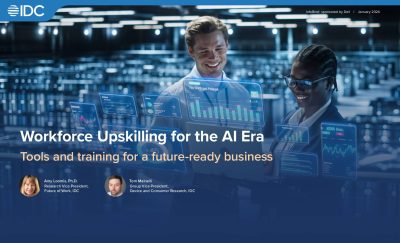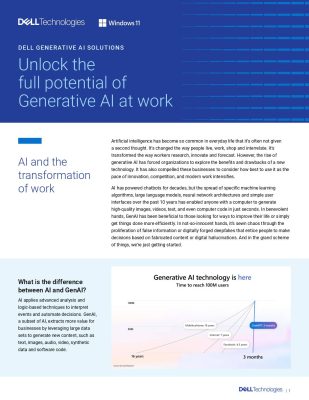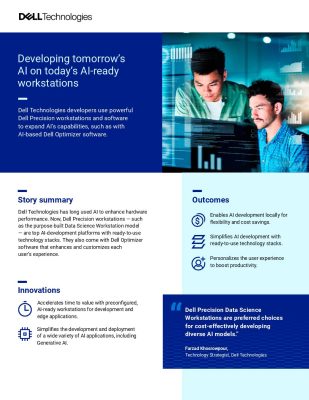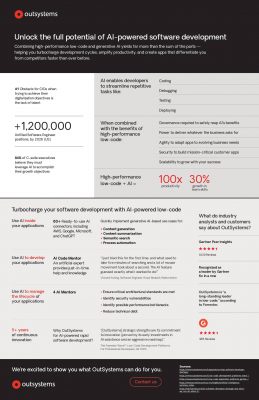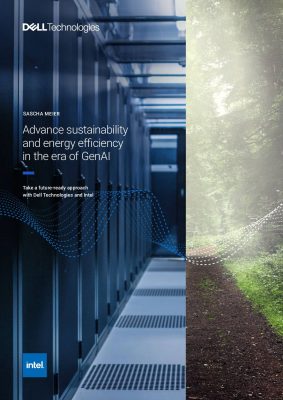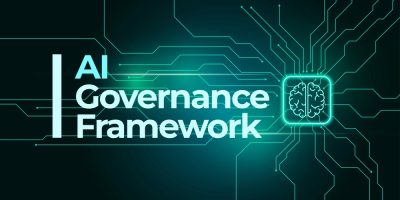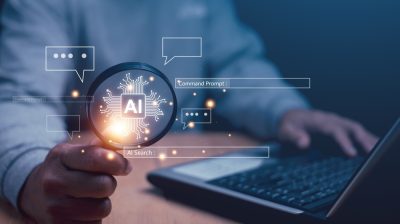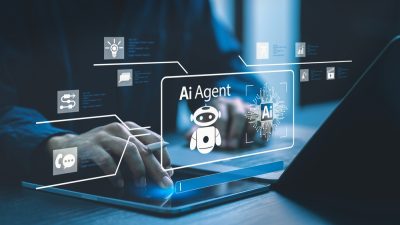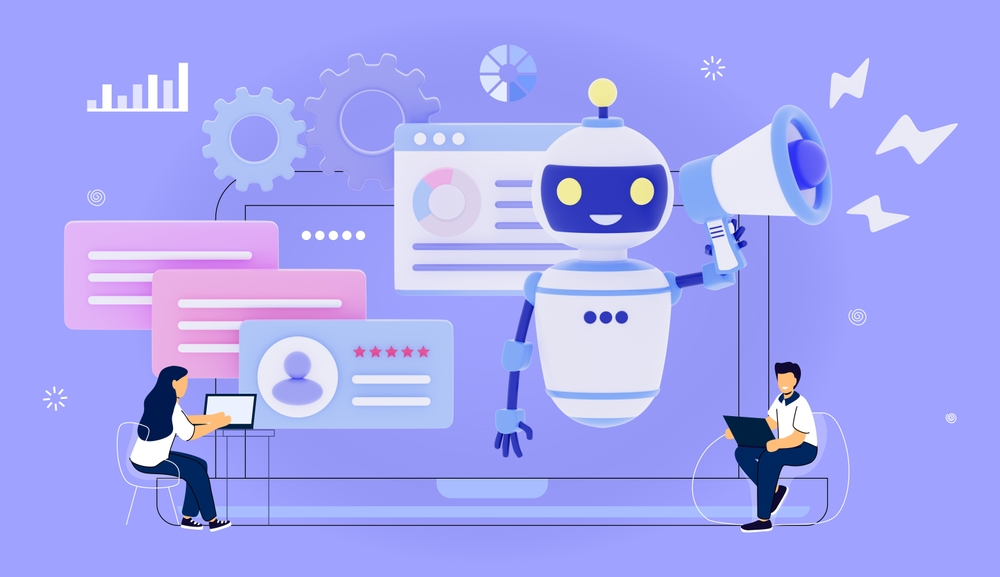Highlights:
- Across industries like finance, healthcare, and manufacturing, RPA catalyzes efficiency and accuracy, reducing manual errors and processing times.
- Incorporating AI into RPA workflows enables continuous learning and process optimization.
Artificial intelligence (AI) and robotic process automation (RPA) are distinct technologies for task automation. AI focuses on cognitive tasks requiring intelligence, while RPA automates routine, manual tasks. AI excels in complex decision-making, while RPA streamlines repetitive tasks, and both can be combined for enhanced business process automation and efficiency.
This guide explores the distinct capabilities of RPA vs. AI, shedding light on their applications and impact. Let’s start with the generic yet informative data initially.
Informative Facts on Artificial Intelligence
- AI adeptly manages intricate tasks demanding reasoning and decision-making, encompassing pattern recognition, prediction, and natural language processing.
- Utilizing extensive datasets and sophisticated algorithms, like machine learning and deep learning, AI makes intelligent decisions.
- AI exhibits a capacity to learn and enhance itself autonomously by analyzing data and feedback, eliminating the need for manual intervention.
- Common applications of AI include the automation of highly intelligent tasks like fraud detection, customer service, and content creation.
Informative Facts on Robotic Process Automation (RPA)
- RPA boosts efficiency and accuracy, reducing manual errors and processing time, and is applicable across various industries like finance, healthcare, and manufacturing.
- It operates on pre-determined rules and decision trees without the need for advanced algorithms or machine learning.
- RPA specializes in automating predictable and repetitive tasks governed by rules, such as data entry, form completion, and invoice processing.
- RPA employs software robots to replicate human actions, including clicking buttons and inputting data into fields.
This foundational knowledge serves as a stepping stone to gain a deeper understanding of the RPA vs AI difference. These technologies offer numerous advantages that prove beneficial for businesses.
Key Benefits of RPA vs. AI that Businesses Should Be Aware Of
Knowing the distinctive advantages of RPA and AI is crucial for businesses navigating the digital landscape.
Unveiling the profound benefits of RPA
Speed: Achieves 4-5 times faster execution with uninterrupted 24/7/365 availability, eradicating delays.
Accuracy: Delivers error-free results, mitigating potential risks and costs.
Compliance: Maintains comprehensive logs (audit trail), which is crucial for ensuring proper compliance.
Productivity: Liberates knowledge workers for more value-added tasks, elevating overall productivity.
Efficiency: Integrates disparate processes and systems, leading to heightened operational efficiency.
Furthermore, RPA goes beyond mere cost-cutting; it has the potential to improve customer experience and boost engagement and morale.
Unveiling the profound benefits of AI
Automating tasks: AI excels at automating routine tasks, reducing human workload, and enhancing efficiency.
Data analysis: AI analyzes large datasets, identifies patterns, and provides valuable insights for decision-making.
Accuracy: AI algorithms ensure precise results, minimize errors, and improve overall reliability.
Continuous operation: AI systems operate 24/7 without breaks, ensuring constant availability and increased productivity.
Handling complexity: AI tackles complex tasks like advanced calculations, processing large datasets, and managing intricate processes.
These benefits underscore the significance of both RPA and AI, mirroring the market influence of these technologies.
Analyzing the Market Dynamics: AI Vs. RPA
AI and RPA are rapidly expanding markets, each serving distinct purposes. AI simulates human intelligence for tasks like natural language processing, decision-making, and problem-solving across diverse sectors. In contrast, RPA automates repetitive tasks prevalent in finance, healthcare, and manufacturing.
The global robotic process automation (RPA) market is projected to surpass 13 billion U.S. dollars by 2030, marking a significant growth from the 2020 figure of just over 1 billion. When it comes to AI, the market is anticipated to witness an annual growth rate (CAGR 2024-2030) of 15.83%, leading to a market volume of USD 738.80 billion by 2030.
Despite a slower growth rate in the RPA market, both AI and RPA are poised to play vital roles in digital transformation and automation across industries in the coming years. This market analysis must have triggered your interest in learning about the practical use cases of these technologies.
Examples of RPA vs. AI That Businesses Should Focus On
In the ocean of automation, RPA and AI are must things. Let’s further delve into practical instances where these technologies make a significant impact on business operations and decision-making.
Data migration using RPA
Let’s explore a scenario where a company is transitioning from one customer relationship management (CRM) system to another, involving the transfer of customer data, including contact details, purchase history, and communication logs. Employing robotic process automation (RPA) becomes pivotal in automating this data migration process.
Here’s a breakdown:
-
Data extraction
RPA bots are coded to access the legacy CRM system, extracting customer data based on predefined rules.
-
Data transformation
The extracted data may require formatting to align with the new CRM system’s structure. RPA bots adeptly perform these transformations.
-
Data loading
RPA bots securely transfer the formatted data into the new CRM system, adhering to necessary protocols and validation rules.
-
Error handling
In instances of discrepancies or errors, RPA bots are programmed to log issues and, if feasible, attempt automatic rectification or notify administrators.
-
Verification
RPA bots conduct cross-verification between migrated data in the new system and the original data, ensuring precision.
-
Notification
Upon successful data migration completion, RPA bots generate reports and dispatch notifications to pertinent stakeholders.
This example showcases how RPA can streamline and enhance the accuracy of the data migration process during a transition between CRM systems.
SAP data migration using AI
AI has transformed industries, including SAP data migration. AI integration in this process enhances efficiency, accuracy, and success rates.
Here’s how AI shapes the future of SAP data migration:
-
Data quality assessment
AI algorithms automate the analysis of data, identifying and rectifying inconsistencies. This reduces manual effort, ensuring accurate and reliable data before migration.
-
Intelligent mapping and transformation
AI learns from historical migration patterns, automatically mapping data fields. This minimizes manual intervention, saving time and reducing the risk of errors.
-
Predictive analytics
AI uses predictive analytics to foresee migration issues by analyzing historical patterns. Proactive recommendations help mitigate risks, ensuring a smoother process.
-
Automated testing
AI-powered testing tools automate comprehensive checks on data integrity, completeness, and accuracy. This speeds up testing, leading to faster and more reliable data migration.
-
Continuous improvement
AI algorithms learn and improve based on feedback from previous projects. This iterative process enhances efficiency and accuracy in future data migration efforts.
While AI facilitates successful SAP data migrations, human expertise remains essential for nuanced decision-making and problem-solving tasks.
The examples of RPA Vs. AI showcases the inherent strengths of both technologies. Now, let’s explore the combined strength that emerges when these technologies unite.
RPA and AI: Exploiting Their Combined Strength for Greater ROI
Both RPA and AI expedite business processes, but how do you choose between them?
Start by implementing RPA for processes with these characteristics:
- Dependence on data from multiple sources
- Repetitive nature
- Clear start and finish points
- High volume
- Reliance on structured data
RPA is ideal for simpler processes. Once implemented, AI can be deployed for tasks requiring more complexity, such as:
- Workflows with uncertainties or risks
- Non-rule-based processes (e.g., language translation or purchase decisions)
- Processes utilizing unstructured data (e.g., call data, videos, emails) like email routing or invoice extraction
Unlock operational efficiency and elevate the decision-making process by seamlessly integrating RPA with AI.
Explore the enterprise perks delivered through this powerful collaboration, driving transformative outcomes in the dynamic digital landscape. It includes:
- Augmented intelligence integrates AI’s cognitive capabilities with RPA, which enhances intricate decision-making. While RPA efficiently manages routine tasks, AI ensures accuracy and adaptability, especially with exceptions or unstructured data.
- Elevated customer experience results from AI’s proficiency in natural language processing, sentiment analysis, and predictive modeling. Integrated with RPA, AI analyzes real-time customer data, allowing customization based on individual preferences or needs.
- Ongoing learning and process optimization occur by incorporating AI into RPA workflows. This synergy enables the system to learn from RPA-executed tasks, identify patterns, and propose efficiency enhancements, leading to reduced costs and increased productivity over time.
- Adaptable compliance and risk management benefit from AI’s ability to analyze extensive datasets, introducing adaptability within RPA-driven processes. Continuous monitoring of compliance and real-time risk assessment guarantee alignment with ever-changing regulations, reducing losses attributed to non-compliance.
- Both AI and RPA scale for complex processes, but AI’s adaptability stands out as it dynamically learns and adjusts. In contrast, RPA may require manual adjustments or programming for new processes, making it less adaptable.
The juxtaposition of RPA vs AI underscores the nuanced dynamics of automation technologies. But when we combine them, it signifies a strategic partnership propelling businesses towards heightened efficiency, adaptability, and enhanced ROI.
As industries increasingly embrace automation, the synergistic collaboration between RPA and AI acts as a guiding force, steering organizations towards a future where intelligent processes become integral to sustained success.
Expand your knowledge with a variety of insightful technology-related whitepapers available in our resource center.




